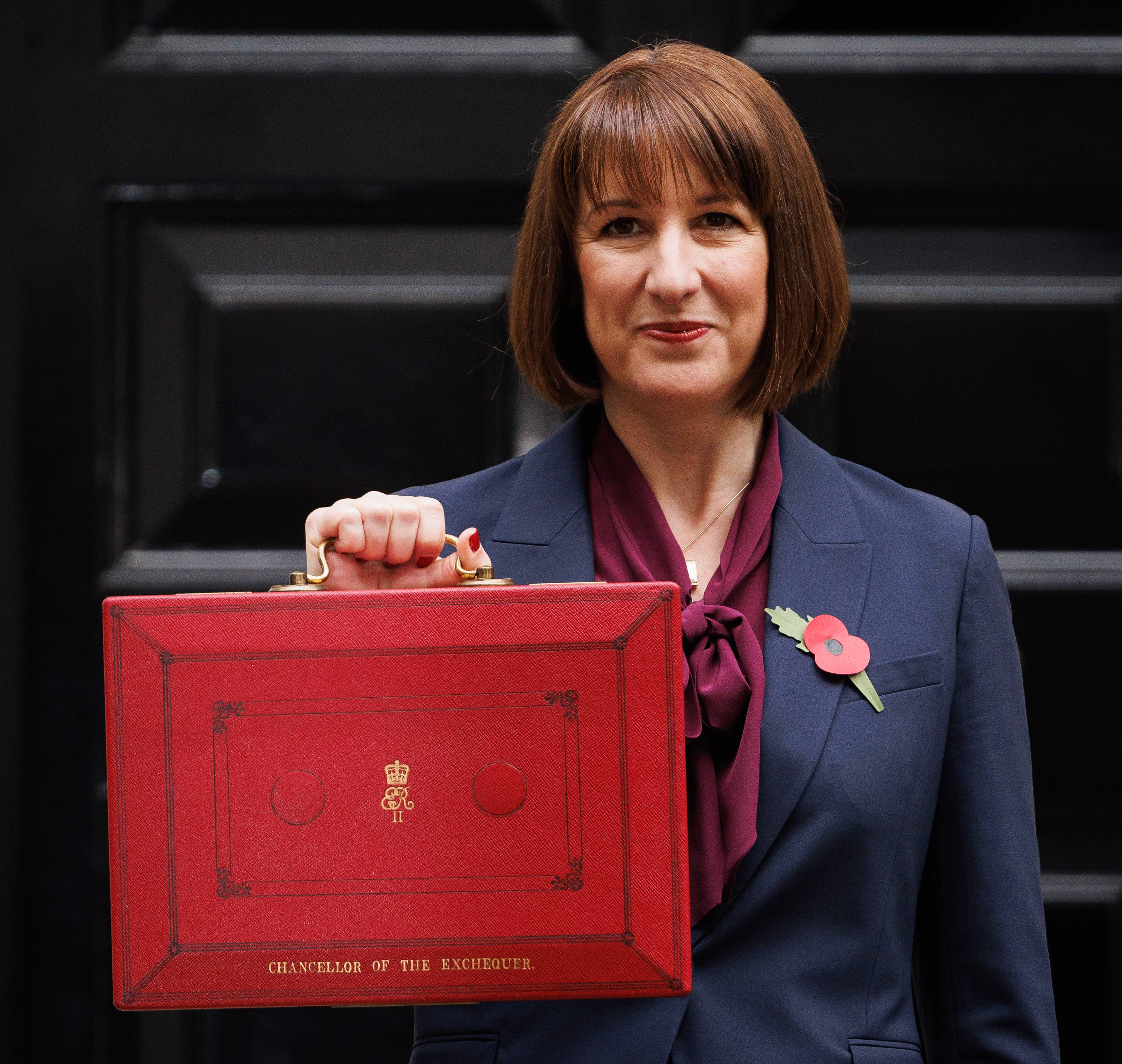Review of the week: Taking stock of GDP
The great uncertainty over whether and when US interest rates will fall took a twist with first-quarter GDP. Much slower growth, offsetting dynamics and higher inflation are creating a puzzle.

Article last updated 30 September 2025.
Quick take:
- US GDP growth was 1.6% in Q1, lower than expected and down from 3.4% in Q4
- Much of the slowdown was driven by unpredictable short-term changes in trade and business inventories
- As US interest rate cuts are pushed further into the future, other countries are feeling the strain
Headline US economic growth was much slower than expected in the first quarter, yet that obscures a complex picture that makes a tough job even tougher for the world’s most powerful central bank.
The first estimate of Q1 GDP showed growth slowed sharply from 3.4% in Q4 to 1.6% – its slowest pace in two years. Forecasters had expected a softer slowdown to 2.4%. It’s not a simple report, however. Digging beneath the surface reveals offsetting forces that will make it hard for the US Federal Reserve (Fed) to plan a path for interest rates that isn’t cloaked in uncertainty. Sort of business as usual then …
The main drivers of America’s economy in Q1 were household spending, which made up 1.7 percentage points (ppts) of GDP growth, and private fixed investment (businesses and home improvements), which delivered 0.9ppt. Government spending added a further 0.2ppt. Adding these up, we get 2.8%, so what happened out there to leave GDP growth at roughly half that? GDP was reduced by two volatile areas of the economy: trade and inventories.
Taking inventories first, this is the stock of unsold goods on the racks in shops and warehouses. Business investment, which boosts GDP, can be ‘fixed investment’, i.e. building a new factory, or shelling out on a new fleet of trucks, or it can be ‘inventory’: simply buying more stock to sell in the future. When inventory buying accelerates, it boosts GDP; when it decelerates, it reduces GDP. In the first quarter, the slowdown in inventory orders reduced headline growth by 0.35%.
Trade is the difference between a country’s exports and imports. When a nation exports more than it buys from abroad, then trade increases GDP; when it imports more than it sells abroad, trade decreases GDP. In the first quarter, exports were very low and imports were relatively high. Because of this, trade reduced GDP by 0.9%. In Q4, trade boosted growth by 0.3%.
Trade and inventories often jump around and can be, as economists say, ‘noisy’. When both are going the same way they can make quite a difference to headline GDP for what could be spurious reasons. Households and businesses still seem to be in good shape, are spending, and the jobs market has few signs of worrisome cracks. Also, it should always be remembered that this is the first look at data still flowing into government statisticians. Two revisions will be made of this analysis and they often move significantly. Last year’s Q1 GDP doubled to 2.2% by the time the revisions were over.
One noticeable improvement was in housing investment. Money spent on renovations and building new homes in Q1 rose 14%. Most people expected high interest rates to put a dampener on the housing market as higher mortgage rates squeezed prospective buyers and discourage those with below-market interest rates from selling. This hasn’t really happened though. Perhaps large increases in rent make building homes profitable regardless of heavier financing costs? According to US government statisticians, the average rent is roughly a fifth higher than before the pandemic and rising at a 5% annual pace so far this year. More homes would help keep rent in check and maybe even drive it down, which would help inflation more broadly. Good news if so, but it will take time.
For now, inflation continues to tick higher. The Fed’s favoured measure, PCE inflation, rose to 2.7% in March. Although it was largely lifted by higher fuel prices, core PCE (which removes volatile energy and food prices) didn’t budge at 2.7%, well above the central bank’s target.
Bond markets sold off in response to all this, as investors became yet more pessimistic about just how much the Fed will cut interest rates this year (although they fell back as the week closed out). The first 25-basis-point US interest rate cut isn’t expected until December. When interest rates are expected to stay higher for longer, bond yields (which rise when their prices fall) increase as well.
| Index |
1 week |
3 months |
6 months |
1 year |
| FTSE All-Share |
3.0% |
7.3% |
13.9% |
7.8% |
| FTSE 100 |
3.2% |
8.1% |
12.9% |
7.9% |
| FTSE 250 |
2.4% |
3.5% |
20.1% |
6.9% |
| FTSE SmallCap |
2.5% |
3.6% |
16.4% |
9.4% |
| S&P 500 |
2.5% |
6.8% |
20.9% |
27.8% |
| Euro Stoxx |
2.1% |
7.9% |
21.1% |
11.9% |
| Topix |
0.3% |
4.4% |
13.7% |
15.2% |
| Shanghai SE |
0.5% |
7.4% |
1.6% |
-9.6% |
| FTSE Emerging |
3.5% |
8.5% |
12.4% |
12.0% |
Source: EIKON, data sterling total return to 26 April
| These figures refer to past performance, which isn’t a reliable indicator of future returns. The value of investments and the income from them may go down as well as up and you may not get back what you originally invested. |
Exporting inflation
The Fed will have plenty to ponder when the interest-rate-setting committee meets on Tuesday and Wednesday. Slowing growth and increasing inflation is never a pretty picture for central bankers. They are expected once again to do nothing. Yet Chair Jay Powell does have to say something – and that will be hard!
In the past, Powell has made his share of loose comments that have sent bond yields plummeting or soaring. He will probably want to avoid adding raucous bond yield moves to the current uncertainty. Yet many investors are forever hearing what they want to hear, misunderstanding and occasionally simply not listening. We all know how easy it is to be misunderstood.
Not only that, but the differences in the economic situation between the US and most other nations are causing their own headaches. We noted last week that strong American households and businesses are making the dollar rise considerably. This can push up inflation in other countries, especially those that use a lot of imported goods. Japan is definitely in that camp. Japan has been very slow to start increasing its interest rate (which remains at virtually zero). This is so out of kilter with global interest rates that it’s driving the yen downward fast.
The Bank of Japan (BoJ) kept its rate at 0.1% last week and gave no indication that more hikes would come soon. The yen slumped 6% in a day, hitting a 34-year low against the dollar. The BoJ has kept its rate so low for so long because it is trying to boost its long-time-anaemic economy and ensure that inflation beds in. For decades, the country has fought deflation (where prices fall each year, rather than rise). Big falls in the currency mean Japan will need to pay more for fuel, which it imports in large quantities, along with other goods and services. That will push up inflation further, to the point where the BoJ will have to raise interest rates to stem it. Yet it’s tough because there’s a chance that higher rates will snuff out the economic recovery the nation has nurtured for the past few years.
If you missed our Q1 Investment Insights webinar, you can watch it here.
If you have any questions or comments, or if there’s anything you would like to see covered here, please get in touch by emailing review@rathbones.com. We’d love to hear from you.



